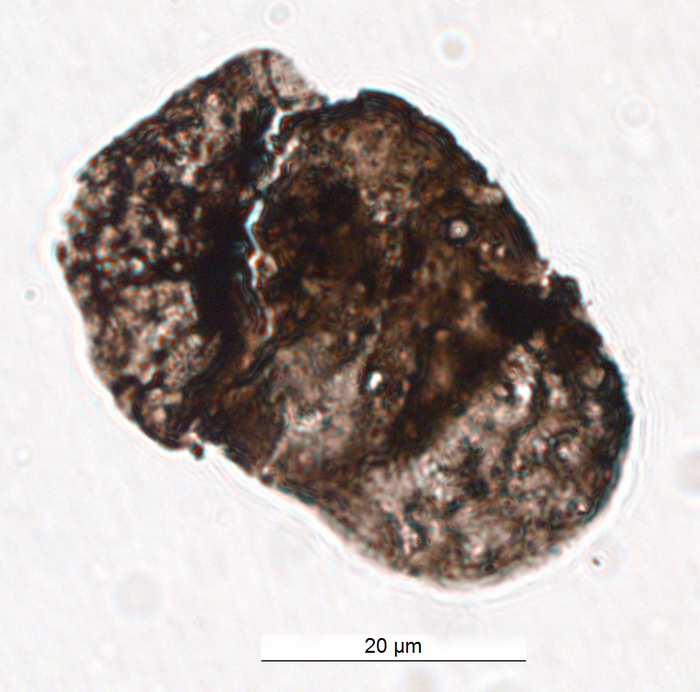The end of the Permian period was marked by a scary mass extinction. The deadliest among the five massive extinctions. It wiped out almost 96% of aquatic and 80% of terrestrial diversity, around 250 million years ago.
Image Credit: EurekAlert
Plants need sunlight to carry on their photosynthesis. But, they need to save their parts from the mutagenic UV-B radiation also. To ensure this, the plant often secrets a protective layer that acts as a sunscreen around its pollen grains to overcome unfavorable conditions and ensure reproduction for the future.
An Old Rock Verdicts Against UV Radiation
Researchers have discovered the presence of a sunscreen-like chemical around the pollen grains extracted from old sedimentary rocks. The pollens were preserved for almost 250 years, and the main function of the chemical was to protect it from the adverse effects of mutagenic UV-B radiation. The researchers believe that the end of the Permian mass extinction was the consequence of the influx of UV rays. The mass extinction resulted in the loss of nearly 80% of biodiversity on the Earth.
But what caused such a severe condition for a living? What created such an inhospitable situation for organisms to survive? Scientists believed that the situation worsened in response to continental volcanic eruptions in the Siberian traps. This resulted in the massive emission of carbon dioxide into the atmosphere, leading to an increase in greenhouse gases and causing global warming by raising the minimum temperature of the earth. The temperature at that time was almost 74 degrees, near the equator.
This event was followed by the rupture of the ozone layer and the influx of harmful UV radiation. The support for this theory is based on the study of malformed and non-functional spores and pollen grains that testify to the presence of UV-B radiation and cause loss of biodiversity.
Possible outcomes of Global Warming?
Professor Liu said that they had developed a successful method to detect the formation of phenolic compounds (these are secondary metabolites and has a significant role in UV screening, antioxidant property, signaling, and defense mechanism, example- Flavanoids, Tannins, lignin, etc) in the fossil pollen grains. The pollens were collected from Tibet and show comparatively more phenolic content that was formed at the time of volcanic eruptions and mass extinction. Scientists believe that increased phenolic compounds in the atmosphere can make plant tissues less digestible and make it difficult for herbivores to digest them properly.
The recent modeling reveals that the continued rise of UV-B radiation decreases plant biomass and terrestrial carbon storage. This could lead to a rapid increase in global warming and make the environment inhospitable for terrestrial and more adverse for aquatic organisms.
Dr. Wes Fraser from Oxford Brookes University, England said that the cause of volcanic eruption on a cataclysmic scale has an impact on all aspects of the Earth’s system. It directly affects carbon emission and rises its concentration in the atmosphere and as a result, decreases the food available for the animals.
The research was published in the journal Science Advances
To ‘science-up’ your social feed follow us on Facebook, Instagram, or Twitter
Follow us on Medium!





1 comment
[…] as lava, that flows on the Earth’s surface. These streams come from an erupting vent during a volcanic eruption. These flows occur in the area with active volcanoes. Lava flows can be of different sizes and […]